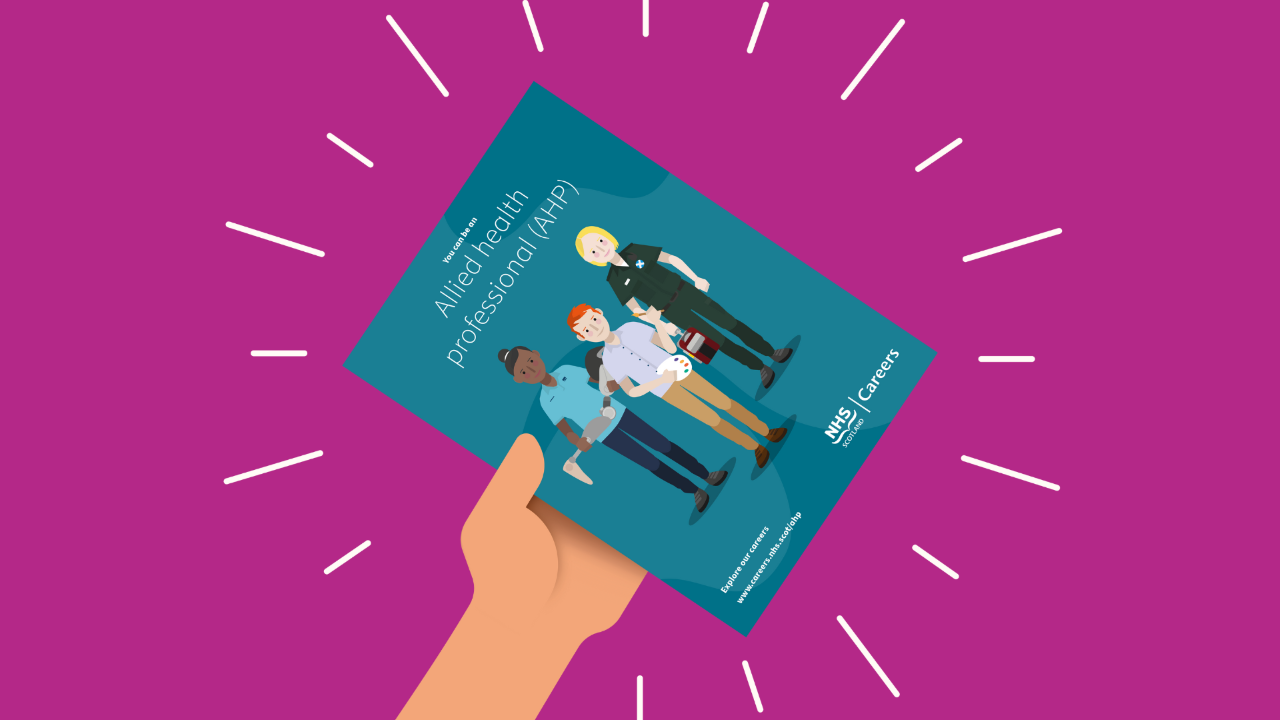
NHSScotland Careers
04 September 2024
•8 min read

Who is Mel?
Mel graduated 25 years ago from the University of Strathclyde, qualifying with a BSc honours degree in Prosthetics and Orthotics. He began his career in Aberdeen, then after a couple of years, moved to Edinburgh to gain further experience in spinal and paediatrics work.
Three years later, Mel relocated to Glasgow, where he specialised in paediatrics. He is now Head of Paediatric Orthotics at the Royal Hospital for Children in Glasgow, NHS Greater Glasgow and Clyde.
Mel’s role covers many conditions, including:
- Cerebral Palsy
- Spina Bifida
- CTEV
- Scoliosis
- Cranial work
Why orthotics?
When Mel was in school, he enjoyed biology physical education. At home he was very practical, helping his dad out around the house. He wondered what he could do to combine the things that he loved and was good at. He liked the idea of doing something in a medical field. After coming across a prospectus for prosthetics and orthotics at Strathclyde university he decided to apply.
During his time at university Mel decided to specialise in orthotics, and then later in paediatric orthotics.
The most rewarding part of being an orthotist
Mel tells us “I feel very privileged to be able to help children and their families on a daily basis during what can be very difficult times for them.”
Over his 25 years of experience, Mel has developed his skills through extensive clinical practice, pre and post graduate education, professional and service leadership and service development. He says the best part of the job is “seeing the positive impact our hard work has on these patients and families.”
What does an orthotist do?
Mel tells us about the process of creating an orthosis, from assessing a patient through to manufacturing their bespoke device. He talks about the technical skills needed to do the role as well as the inter-personal skills.
How to watch our 360 videos
To navigate the 360 videos on this page, follow these instructions:
- If you are using a mouse, hold the left or right button to move the cursor around the screen. Move the cursor to the left to turn left, and to the right to turn right, and so on.
- If you are using a laptop trackpad, click and hold anywhere on the trackpad, then use your finger to move the cursor around the screen. Move your finger to the left to turn left, and to the right to turn right, and so on.
- If you are using a mobile, press and hold the screen while moving your finger. Move your finger to the left to turn left, and to the right to turn right, and so on.
To get the full AHP VR experience, download our immersive video files to your headset.
Scene 1 video: Orthotic assessment and review
In this scene, Mel is checking a helmet for his patient. He says hello to the patient and family before starting the appointment. The patient has received surgery to correct a fault in the growth of a cranial suture when he was developing in the womb. After surgery the Orthosis, in this case a helmet, is required to mould and change the shape of the head.
The family is well known to Mel, having started treatment previously. Today’s visit was a planned appointment to check the amount of growth that has occurred within the helmet and ensure it remains efficient and safe to use going forward. The patient's mum feels the helmet is getting tight and that he needs a new one.
Mel showcases his interpersonal skills by assessing and reviewing his patient. From this appointment, Mel agrees that his patient will need a new helmet and sizes the patient for a new one.
Scene 2 video: Orthotic shape capture
Having assessed the need for a new helmet Mel undertakes the scanning procedure to capture the shape of his patient’s head to manufacture a new helmet prescription.
Digital technology has made it possible to scan the patient's head using a smartphone and associated software. The scan produces a 3D computer model that can be carved using a robotic arm. The helmet is then manufactured on this carved model.
Mel asks the patient's mum to distract him with a toy while Mel carries out the scan.
Scene 3 video: Orthotics treatment
After the helmet has been manufactured, it is ready for a final fitting. Mel makes sure the helmet is comfortable and fits correctly. He checks that it fits correctly around the ears and forehead. This time, there is no need for any adjustments.
The family is given reminders and further advice so that they are well-equipped to continue with their orthotic treatment and use the body-worn device successfully.
You can become an orthotist like Mel
Orthotists, like Mel, help people with deformities or people who need added support for certain body parts. They work to improve people’s mobility and quality of life.

Discover more allied health professions
Check out our AHP career guide and explore how you can become an allied health professional.